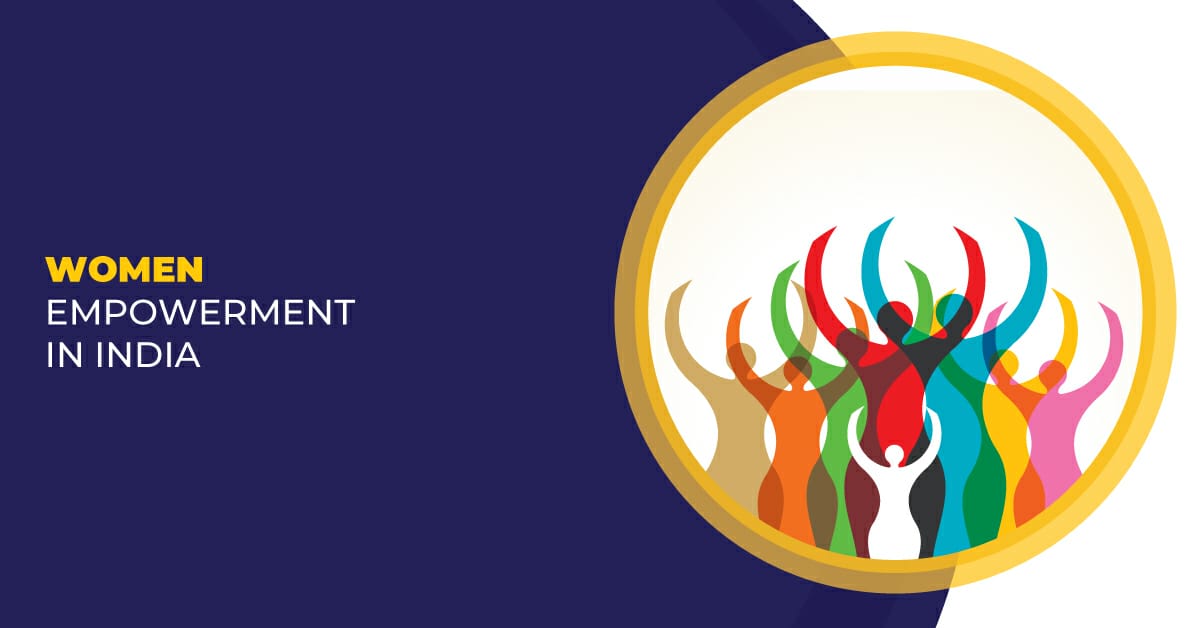WOMEN EMPOWERMENT IN INDIA
 Posted On
Posted On
869 total views, 1 views today
“No struggle can ever succeed without women participating side by side with men. There are two powers in the world; one is the sword and the other is the pen. There is a third power stronger than both, that of women.”
–Malala Yousafzai
Women empowerment can be defined as making women powerful while promoting a sense of self-worth and an ability to determine their own choices. It was in the dawn of the 20th century when women all over the world instigated to protest for their rights and equality. Having had suffered since time immemorial, women were measured as non-existent at the hands of men and the society. They were considered as secondary citizens, were enslaved, objectified, and had to fight for literally everything, from their right to opine, to property, to vote, etc.
Background
It was the industrial revolution of the 1850s that accompanied with it fluctuations in the social set up. Prior to this phase, women were shut-in the houses and took up traditional jobs like sewing. However, developments in agriculture carried small farmer families to the urban centres. The cost of living augmented and somehow one income was not enough to support the family. Therefore, women had to earn too. Transformation of the textile industry also played a central role in the entry of women in the workforce. Despite, working in industries, there were discrimination and wage disparities. About the year 1910, women and socialist groups in the USA, Europe, and Russia, began the women’s rights movement challenging equal pay, universal suffrage, anti-discriminatory laws, and for creating awareness among the women. As an impact of the industrial revolution, the role that women played in society began to change. Along with socialist fervours, women began to realize their self-worth and wanted equal opportunities in all dominions of life. The United Nations began celebrating International Women’s Day in 1975.
One of the first literatures in the favour of women empowerment was written by the 18th-century British proto-feminist Mary Wollstonecraft. “A Vindication of the Rights of Woman”, published in 1792 and is one of the earliest works of feminist philosophy. In it, Wollstonecraft answers to those educational and political theorists of the 18th century who supposed that women should not receive a rational education. She contends that women’s education should match their position in society, and that they are essential to the nation because they raise its children and could act as respected “companions” to their husbands. Wollstonecraft maintains that women are human beings deserving of the same fundamental rights as men, and that treating them as mere ornaments or property for men undercuts the moral foundation of society.
In the advanced and western world where the feminist movements commenced, substantial enhancements have been made. But the gender bias is still prevalent, and women are still subjugated in almost all the fields. Women empowerment is needed to foster a sense of liberty; to provide decision-making power and equal opportunities. It is essential that women all over the world have an equivalent share in all social, political, and economic activities.
Women Empowerment in India
In India, the split between the rural and urban also brings in differences in the development of the lives of women. In our country, the educated and the urban population have appreciated the benefits of educating a girl child and the financial freedom of women. More women from these groups are joining the workforce and are leading a better and stable life. Women Empowerment in India should be viewed in terms of women workforce in formal sectors of the economy and political participation. Feminists in India have contented the fact that “the personal is the political”, emphasizing the active participation of women in political arenas, negating the “public-private” divide
However, discrimination, violence, and harassment at the workplace or in the closed walls of homes continue to persist. But, in rural and poor households, the condition is grim. Issues like female foeticide, the dowry system, and child marriage are prevalent.
The society is still dedicated to patriarchy. Irrespective of the laws, girls are not extended the right to property and are considered as a burden. Even in well-to-do families, male children are often prioritized and have better access to fulfil their ambitions. Girls are often not educated and enlightened on the progress that humanity is making. They neither have health awareness nor financial awareness.
In the Indian land of diversity India’s very own Missile Man, APJ Abdul Kalam was one of those few political figures who was not only an epitome of knowledge but also one of India’s first pro-women politicians and one of India’s most loved people by common consensus. He very aptly quoted “Empowerment of women leads to development of a good family, good society and, ultimately, a good nation. When the woman is happy, the home is happy. When the home is happy, the society is happy and when the society is happy the state is happy and when the state is happy there will be peace in the country and it will develop at greater pace”
Development of any kind cannot be achieved when half of the population is neglected. Therefore, it becomes all the more imperative to harness women’s true potential as the super species on the Earth.


